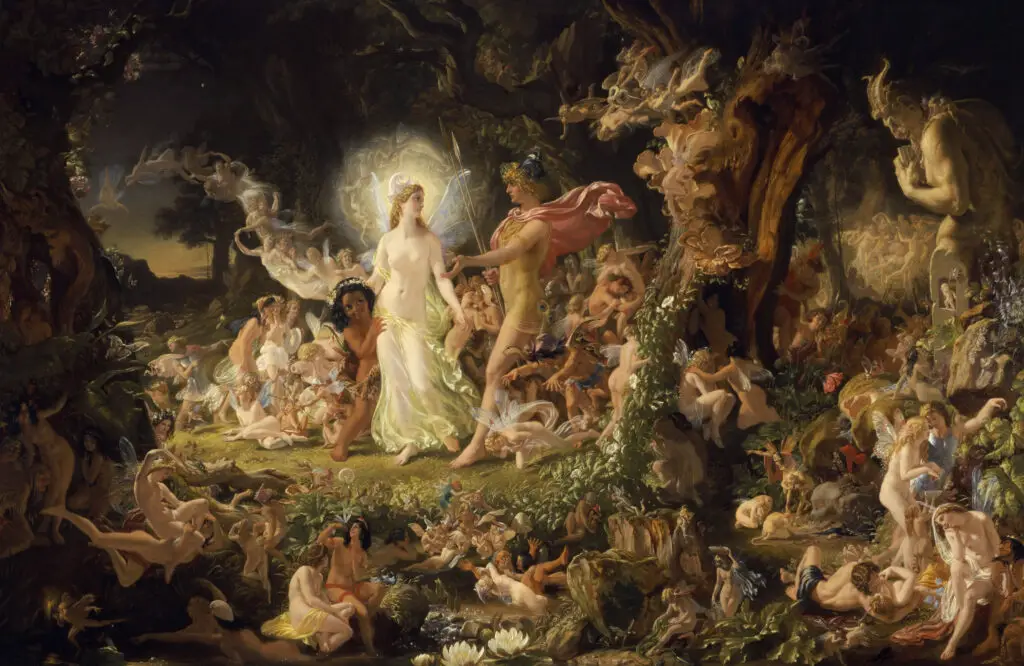



When we think of fairies, we may picture small, magical creatures with wings and a mischievous nature. But are these beings actually mentioned in the Bible?
Before we can answer this question, we need to define what we mean by "fairies." The word "fairy" can refer to a variety of supernatural beings, depending on the culture and time period. In some traditions, fairies are benevolent creatures who help humans, while in others they are more malevolent and trickster-like.
For the purposes of this discussion, we will define fairies as "small, supernatural beings with magical powers." This definition encompasses a wide range of creatures from various mythologies, including the European concept of fairies, as well as other beings like leprechauns and nymphs.
There are countless stories and legends about fairies from cultures around the world, but what about in the Bible? Interestingly, the word "fairy" does not appear in any English translations of the Bible. However, there are some passages that some people interpret as referring to fairy-like creatures.
One frequently cited example is the story of the Nephilim in Genesis 6:1-4:
"When human beings began to increase in number on the earth and daughters were born to them, the sons of God saw that the daughters of humans were beautiful, and they married any of them they chose. Then the Lord said, 'My Spirit will not contend with humans forever, for they are mortal; their days will be a hundred and twenty years.' The Nephilim were on the earth in those days—and also afterward—when the sons of God went to the daughters of humans and had children by them. They were the heroes of old, men of renown."
Some people interpret the "sons of God" in this passage as referring to angels or other supernatural beings, and the Nephilim as their offspring with human women. This interpretation has led some to speculate that the Nephilim may have been fairy-like creatures, due to their supernatural origins.
Another passage that some people interpret as referring to fairy-like creatures is Ezekiel 10:1-22, which describes the appearance of cherubim:
"I looked, and I saw the likeness of a throne of lapis lazuli above the vault that was over the heads of the cherubim. The Lord said to the man clothed in linen, 'Go in among the wheels beneath the cherubim. Fill your hands with burning coals from among the cherubim and scatter them over the city.' And as I watched, he went in. Now the cherubim were standing on the south side of the temple when the man went in, and a cloud filled the inner court. Then the glory of the Lord rose from above the cherubim and moved to the threshold of the temple. The cloud filled the temple, and the court was full of the radiance of the glory of the Lord."
Cherubim are often depicted in art and literature as winged creatures with animal or human faces. Some people interpret these descriptions as being similar to the modern concept of fairies.
While it is true that there are passages in the Bible that some people interpret as referring to fairy-like creatures, it is important to remember that these interpretations are not widely accepted by scholars or theologians. The Bible does not specifically mention fairies or other similar beings, and it is unlikely that the authors had these creatures in mind when they were writing.
When reading the Bible, it is important to consider the historical and cultural context in which it was written. The Bible was written by various authors over a span of centuries, and it reflects the beliefs and values of the societies in which it was created.
While it may be tempting to impose our modern beliefs and concepts onto the Bible, it is important to remember that the authors were writing from a different perspective. They may have had different ideas about the supernatural and the natural world than we do today.
So, are fairies in the Bible? While some people may interpret certain passages as referring to fairy-like creatures, the Bible does not specifically mention fairies or other similar beings. It is important to approach the Bible with an open mind and to consider the historical and cultural context in which it was written.
Ultimately, whether or not fairies are "real" is a matter of personal belief and interpretation. While the Bible may not provide a definitive answer on this topic, it can still offer valuable insights into the nature of the supernatural and the human experience.
Related Posts